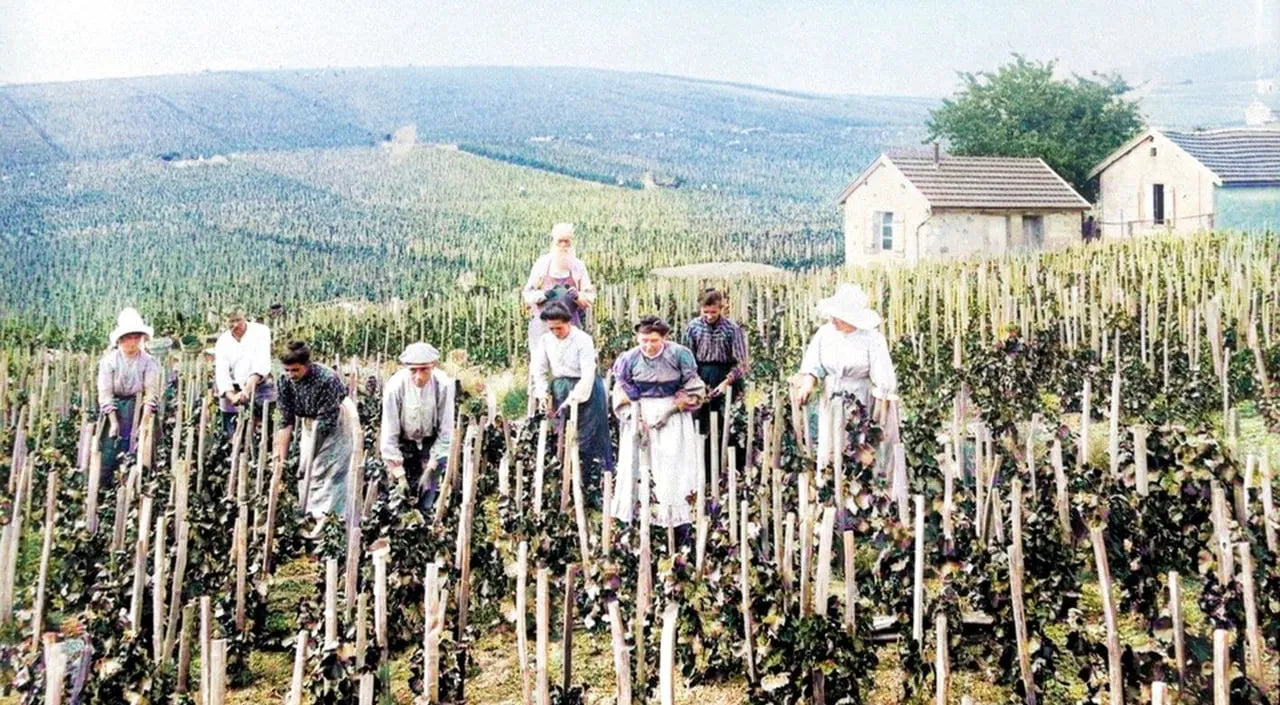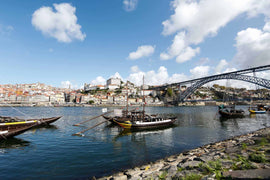Champagne is so internationally famous, such a universal shorthand for all things quality, luxury and convivial (off the top of my head: Miller Hi-Life ‘the champagne of beers’; Churchill’s quip that meeting FDR for the first time was like “opening up a bottle of champagne”; “sparkling” and “bubbly” as adjectives full stop) that is always kind of startling to remember that the world’s major go-to for good times all comes from this one very small, and not particularly warm, part of France - and that most of it originates with cranky farmers plying difficult dirt.
But the entirety of the Champagne region, which is the furthest north grapes vines can be commercially grown in France, covers just 34,000 hectares of land (the Napa Valley AVA, arguably the USA’s most famous, has 49,000 hectares), less than 30% of which is planted to white grapes. What it lacks in girth, it makes up for in density though, as 90% of its grapes come from some 19,000 small holders, averaging a vineyard size of only 2 hectares. There are the giant houses too of course, but even they buy grapes from smaller concerns to maintain production and quality levels each year even as climatic conditions (spring frost, poor weather) vary widely.
It’s a very specific set of circumstances, even within the larger wine world. While I’m sure that any gathering of champagne producers generates much passionate disagreement, put them all in a room with outside vignerons and I think they’d form their own faction pretty quickly.
I don’t know if our two producers this month have ever specifically interacted over the years, though it is highly likely. Both have been farming and making wine in Champagne for generations, starting small and expanding gradually over the years, until a pivotal descendant took the reins and shaped their modern incarnations. These particular bottles each display the flagship typicity of their respective areas of the region: E Baurnaut has a Blanc De Noir from the Pinot Noir dominated terroir of Bouzy, while Michel Gonet makes a Blanc de Blanc from the Cotes de Blancs (so named for the white color of its chalky soils actually, but also where most of the Chardonnay in Champagne is concentrated.) Both Barnaut and M. Gonet have also been featured in previous editions of the Champagne Club, though not in several years and never together. Regardless of whether this is the first time they’ve been put in direct conversation, I can guarantee the results will be absolutely sparkling.
Sante!
The PlumpJack Wine Team
|
E. Baurnaut Grand Cru Blanc de Noirs NV |
|
|
From: Bouzy, Champagne, France |
About the Winemaker: Edmond Barnaut was a pioneer in Champagne, becoming one of the first to launch his own brand outside of the bigger controlling centers of Epernay and Reims. In 1874 he formed Champagne Barnaut in the town of Bouzy where he had already owned and farmed some vines. Later he married Appoline Godmé-Barancourt who also had inherited additional vineyards from her family in the same village. The first cuvée was two-thirds Pinot Noir and one-third Chardonnay and is still made today under the Grande Réserve label, still using small amounts of reserve wine coming from the solera system started by Edmond himself and maintained throughout the five generations of family descendants. The current proprietor, Philippe Secondé has been at the helm since 1985, after earning his degree in enology. Since then he has significantly increased the house’s vineyard holdings, modernizing its cellar and expanding production all while moving its viticulture towards organic practices. Along with its sister village of Ambonnay, Bouzy has some of the finest vineyard sites for Pinot Noir in the Champagne region, the majority of them Grand Cru status. With over 830 acres of vines growing up the rolling foothills of the Montagne de Reims, the southern facing orientation ensures the best possibility for ripening year after year, resulting in rich and full-bodied wines of class, similar to the reputation of wines from the Côte des Blancs in Burgundy. Assemblage/Vinification: Today Champagne Barnaut consists of 12 hectares of Grand Cru vines spread out over 22 parcels in Bouzy composed of 12% Chardonnay and 88% Pinot Noir, along with 5.4 hectares in the Valle de la Marne. All of the wines undergo malolactic fermentation in stainless steel tanks. From each vintage production, fifty percent of the wine is saved for reserve. The non-vintage wines spend a minimum of twenty-four months on the lees before being disgorged and rested for another three months before being dressed for market. The Barnaut Blanc de Noir is made entirely of Pinot Noir from Bouzy, and has a miniscule production of only 1,650 cases a year. The wine has a minimal dosage of 6 g/L eschewing flabbiness while preserving the richness and purity of the Bouzy fruit. Tasting Notes: Classic Bouzy fruit notes of mixed red berries and tangerines, complimented by gingery spices and a chalky mineral backbone. The nose is yeasty with bread dough like quality paving the way for a bouquet of orchard fruits that spring forth from the glass. The finish is long and luxurious with plenty of juicy acidity to leave you wanting more. |
|
Winemaker: Phillipe Secondé |
|
|
Price per bottle / Price per case: $54.99/$593.90 |
|
|
Suggested Food Pairing: Rind cheeses along with dried stone fruits and nuts. Pasta alla carbonara with guanciale and chili flakes. |
|
|
Michel Gonet Les 3 Terroirs Extra Brut Blanc de Blancs |
|
|
From: Eparney, Champagne, France |
About the Winemaker: Gonet is a very old name in Champagne. The family moved to Champagne from the Beaujolais in the 15th century and worked in the vineyards before establishing a Champagne house in the early 1800s. Each subsequent generation helped lay a foundation for a successful domaine with the most recent patriarch, Michel Gonet, enlarging the cellars in Avize and refocusing their winemaking in the 1970s.The total holdings are around 40 hectares, consisting mostly of Chardonnay on the Côte des Blancs. The vines are located in the villages of Le Mesnil sur Oger, a little further south, in Vindey on the Sézannais hillsides, and also near Troyes, on the slopes of Montgueux. Assemblage/Vinification: Made from vineyards in the three villages (terroirs) of le Mesnil-sur-Oger, Montgueux, and Vindey. A minimum of 5 years aging on lees before release and disgorged only when it leaves the estate. Dosage is Extra Brut at 5 g/l. Tasting Notes: A creamy and complex wine with fresh notes of fruits and flowers with hints of pastry fragrances. This classic chardonnay is fruity, vivacious and aerial, with a slight acid scent and a beautiful mineral purity. |
|
Winemaker: Antoine Gomérieux |
|
|
Price per bottle / Price per case: $68.99/$745.10 |
|
|
Suggested Food Pairing: As an aperitif or with light spicy dishes. |
|





